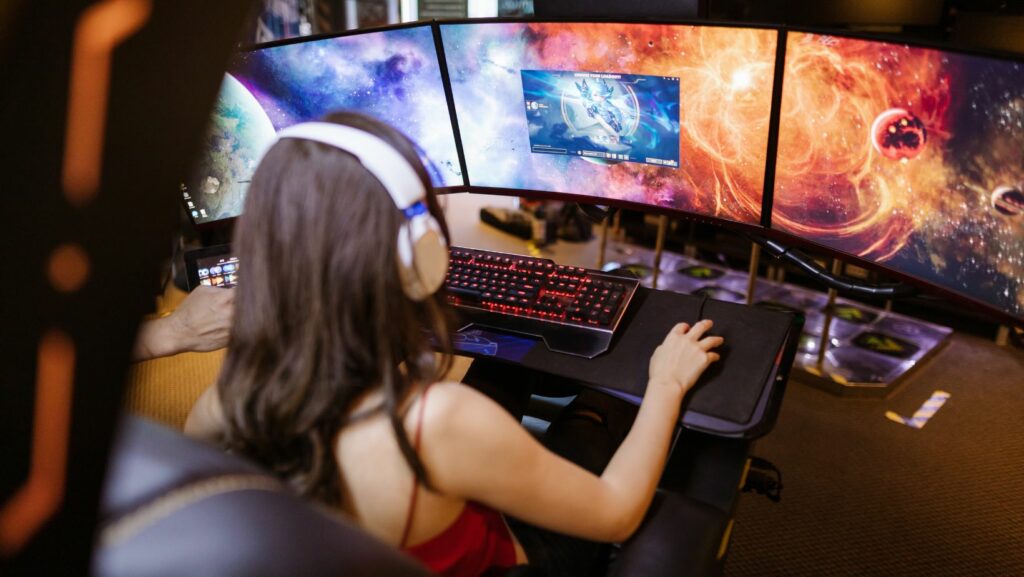Education apps are changing the way we learn, making studying more engaging and effective. With tools that merge education and entertainment, these apps are helping students of all ages develop better study habits. A key ingredient in their success? Gamification—an innovative approach that uses rewards, challenges, and interactive lessons to make learning enjoyable and impactful.
The Psychology of Gamification: Why It Works
At its core, gamification applies game-like elements to non-game contexts, such as education. Features like points, badges, and leaderboards tap into both intrinsic and extrinsic motivation, keeping learners engaged and invested in their progress. The psychology behind this lies in the brain’s response to rewards. Each achievement—whether it’s a badge or a completed challenge—triggers a dopamine release, reinforcing the behaviour and encouraging learners to continue.
This method isn’t just about making learning fun; it’s about building habits. Apps like Duolingo, for example, use streaks and badges to motivate users to practise daily. These small, consistent wins create a sense of accomplishment, which is key to forming long-term study routines.
Transforming Study Habits with Rewards and Challenges
Gamification takes the monotony out of studying by turning it into a dynamic, goal-oriented experience. Rewards and challenges are two of the most effective gamified features for driving engagement.
- Rewards: Points, certificates, and other achievements give learners tangible milestones to celebrate. These rewards aren’t just arbitrary—they represent progress and effort, which boosts confidence.

- Challenges: Timed quizzes, skill-based competitions, or personal learning goals keep users focused and driven. The element of competition, whether against others or oneself, adds excitement and urgency to the learning process.
Take the example of Khan Academy. The app uses a point system to reward users for completing lessons and quizzes. Learners can also tackle “missions,” which are personalised challenges designed to reinforce concepts and track growth over time. By combining rewards with structured challenges, these apps encourage consistency—a crucial factor in successful learning.
The Role of Interactive Lessons in Making Learning Fun
Interactive lessons are another cornerstone of education apps, seamlessly complementing gamification. Features like drag-and-drop exercises, virtual simulations, and interactive videos immerse learners in the subject matter, making concepts easier to grasp.
For instance, apps offering virtual science labs allow students to experiment with chemical reactions or physics simulations without the need for expensive equipment. Similarly, language-learning apps often include real-world conversation simulations that help learners practise in a risk-free environment.
These interactive experiences not only make lessons enjoyable but also improve retention. When paired with gamified elements like progress tracking or unlocking new modules, interactive lessons become a powerful tool for developing deeper engagement with the material.
Inclusive Gamification: Adapting for All Ages and Abilities
One of the most impressive aspects of education apps is their ability to cater to diverse learners. From playful graphics and simple challenges for children to advanced content and professional rewards for adults, these apps adapt to different age groups seamlessly.

Many even incorporate accessibility features, such as dyslexia-friendly fonts and adaptive difficulty levels, ensuring that everyone can benefit.
For example, apps like Duolingo or platforms developed by Ronas IT often include gamified tools that accommodate different abilities and learning styles. This inclusivity ensures that learners of all backgrounds can experience the benefits of gamified education.
Gamification is more than a trend; it’s a transformative force in education. By combining rewards, challenges, and interactive lessons, education apps are reshaping how we approach learning. Beyond engagement, they’re fostering long-lasting study habits and making education accessible to all.
Could gamification be the key to bridging the global education gap? Only time will tell, but one thing is certain: education apps are leading the way towards a more engaging and inclusive future for learners everywhere.

